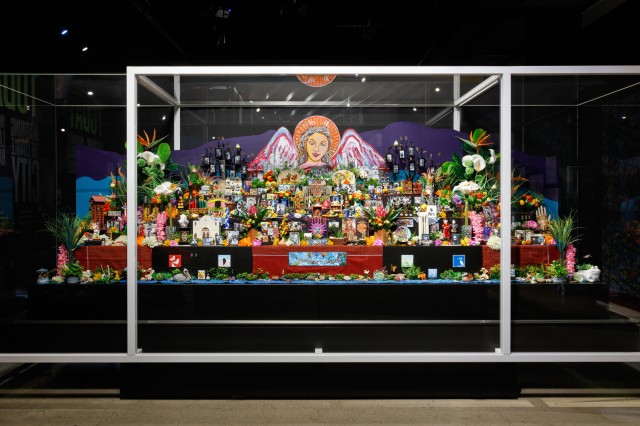Start Your Engines
Cruise through automobile history in a behind-the-scenes look at our vintage image collection of L.A.’s early driving scene.

Published August 8, 2023
Hit the road with us on a behind-the-scenes journey and see automobile images from the Seaver Center for Western History Research, from one of the first car dealerships to early auto racing to electric vehicles.

Early Rides
The Tourist, produced by the Auto Vehicle Company in downtown Los Angeles, was not only the first production automobile to be manufactured on the West Coast and it still remains the largest such venture in the region. Although the company's early records were lost or destroyed, it is estimated that they produced 5,000 vehicles in their downtown Los Angeles factory. Ralph B. Hain, one of the company's founders and the factory manager, years later donated to the NHM some of the woodworking tools used to craft the Tourist bodies.
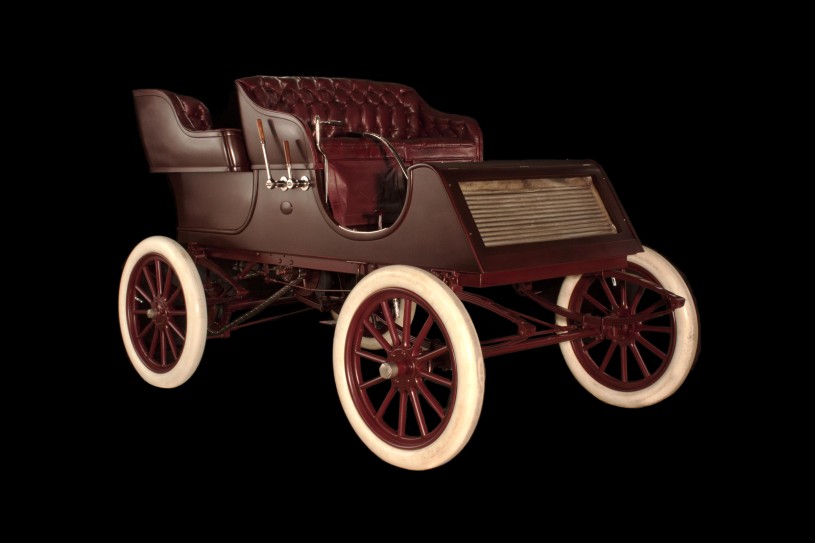
Level 1, Becoming Los Angeles
Startups have always been a part of Cali culture. The Auto Vehicle Company, founded in 1902, was one of the earliest manufacturers of wooden-body gasoline powered Tourist automobiles. This Tourist is the sole survivor from the car’s first year of production.
Startups are emblematic of the Golden State. The Tourist, on view in NHM's Becoming Los Angeles exhibition, was an early 20th Century powerhouse manufactured by the Auto Vehicle Company. Dealerships were established throughout California and there were also agencies in Arizona, Utah, Oregon, Oklahoma, and Canada with some cars even shipped to Mexico. In addition to cars, the company offered trucks, delivery vans, fire engines and ambulances. They also built many custom bodies. In 1973, NHM purchased this model from Gilbert Erickson of El Monte, California. It is believed to be the only survivor from the company's first year of production. Upon its arrival at the Natural History Museum, its engine was replaced by a more complete one donated by David Rice, the co-owner of the other Tourist donated to NHM.
Wheeling and Dealing
Car dealers seized the opportunity to join a start-up industry that reinvented the American City, Darryl Holter and Stephen Gee write in their recently released book, Driving Force: Automobiles and the New American City, 1900–1930.

Ralph Hamlin was an important visionary sales figure, one of the pioneers of the car dealership. Born in San Francisco, he and his family moved to L.A. when he was young. He was an avid athlete, and raced bicycles, an interest of many of the early auto dealers. Hamlin’s association with the Museum goes back to 1935. When NHM’s Hall of Transportation opened in 1944, his 1908 Franklin car was one of the makes on display.

Hamlin operated an automobile dealership in two locations on South Main Street, in downtown Los Angeles. When he was granted a franchise to sell Franklin cars in 1905, he opened the Flower Street location. By 1926, he had dealerships in Glendale, Hollywood and San Diego.
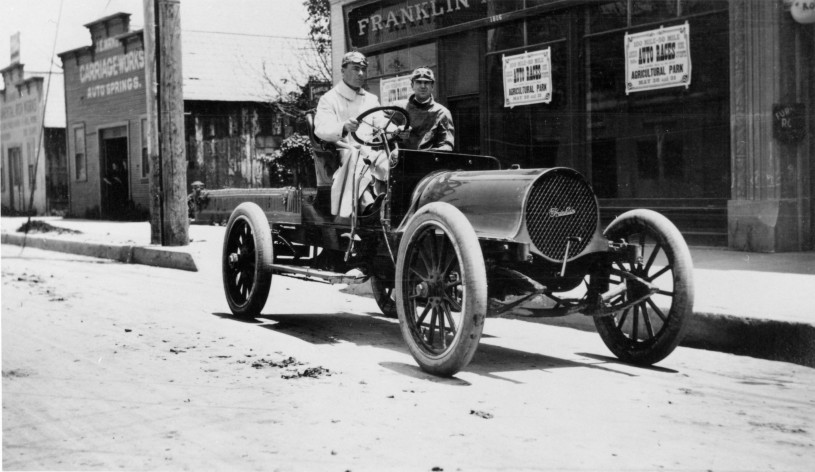
In 1935, he donated his 1910 Franklin, the first of eventually a total of four automobiles that are in the NHM car collection. In 1935 he also donated a 1912 Franklin chassis.
Speed Racer
Many early dealers were race car enthusiasts or embarked on endurance trips to prove the reliability of their products.
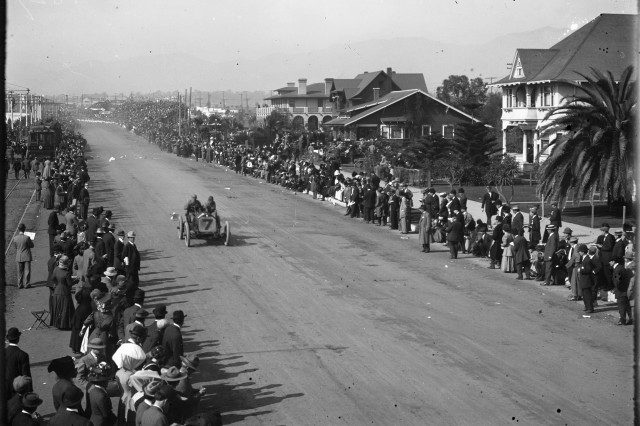
Seaver Center for Western History Research
American Grand Prix Race in Santa Monica circa 1910

Seaver Center for Western History Research
Ralph Hamlin at the wheel of a Lozier automobile
1 of 1
American Grand Prix Race in Santa Monica circa 1910
Seaver Center for Western History Research
Ralph Hamlin at the wheel of a Lozier automobile
Seaver Center for Western History Research
Horse Power

The Race Track, circa 1905. Auto racing became popular at Agricultural Park, supplanting the enthusiasm for horse racing events which dominated the track in earlier decades. Ralph Hamlin raced there in 1908. By 1913, the area became known as Exposition Park. That was also the year that the Museum of History, Science, and Art (now NHM) opened its doors.
Vintage Auto Shows
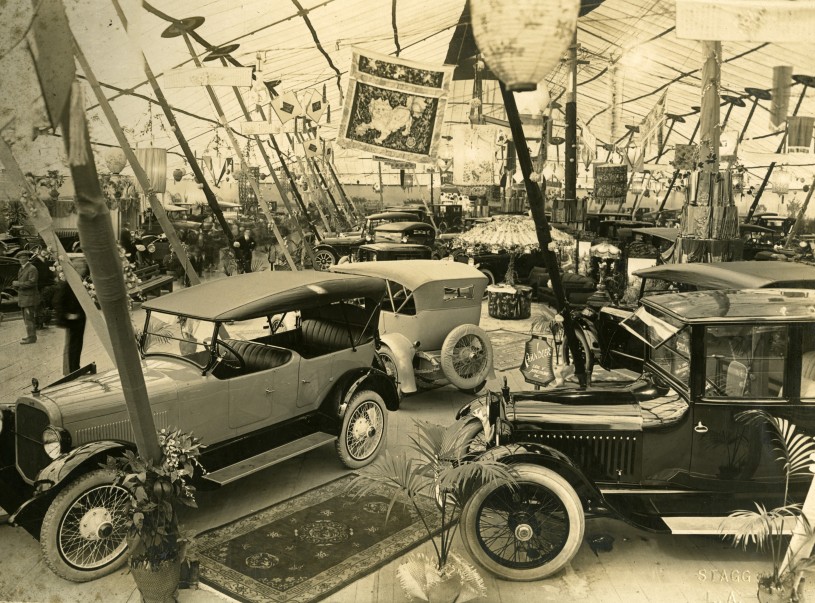

Lanterns and other Chinese decorative art pieces were supplied for the show from the F. Suie One Co., a well-established importer of Chinese goods that opened in 1888. “The show highlighted the many innovations in California automobile customization, including the special bodies and permanent tops,” according to Driving Force.
Women in the Driver's Seat
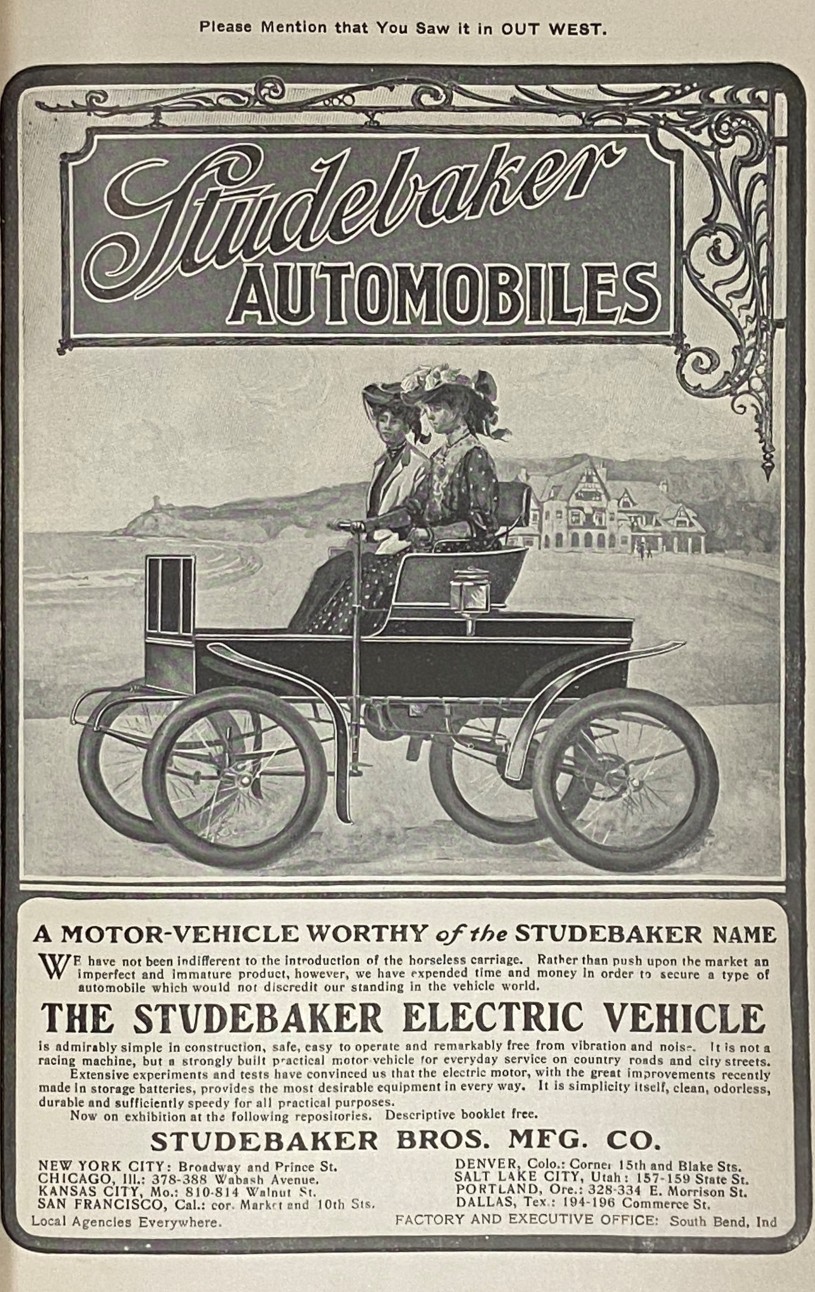
Women had a significant influence on the car market, particularly their preference for electric vehicles because of the ease of operation. This ad for a Studebaker Electric vehicle, mentioned in the book, Driving Force, assures women that the car is “not a racing machine but a strong built, practical motor-vehicle for everyday use.” Women had to hop on the car-culture bandwagon for the enterprise to take off.
Car culture, chronicled
Motor West, a publication established in 1906 in Los Angeles, was a must-read for the SoCal car enthusiast. Below are three of the beautifully illustrated covers.
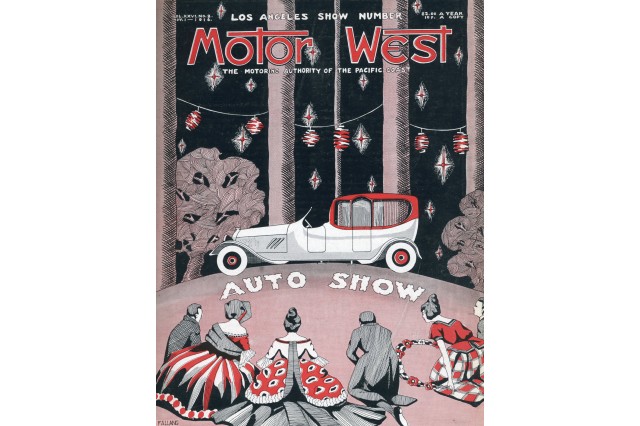
Seaver Center for Western History Research
A Motor West cover from November, 1916
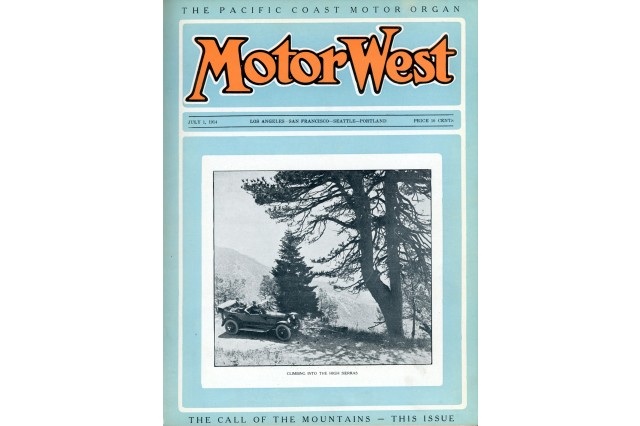
Seaver Center for Western History Research
A Motor West cover from July, 1914
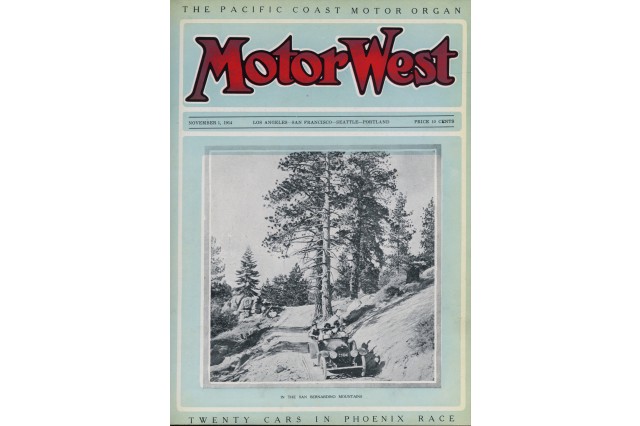
Seaver Center for Western History Research
A Motor West Cover from November, 1914
1 of 1
A Motor West cover from November, 1916
Seaver Center for Western History Research
A Motor West cover from July, 1914
Seaver Center for Western History Research
A Motor West Cover from November, 1914
Seaver Center for Western History Research
Research for Driving Force was conducted at the Seaver Center for Western History Research at NHM, and many of the automobiles featured in the book are from the Museum's History Department’s collections.
See the history-making Tourist, and more automotive memorabilia, on view in NHM’s Becoming Los Angeles exhibition.
Ride into L.A. History
Watch this television segment from 1967 featuring legendary auto dealer Ralph Hamlin showing off his car collection and looking at his career in the rear-view mirror.
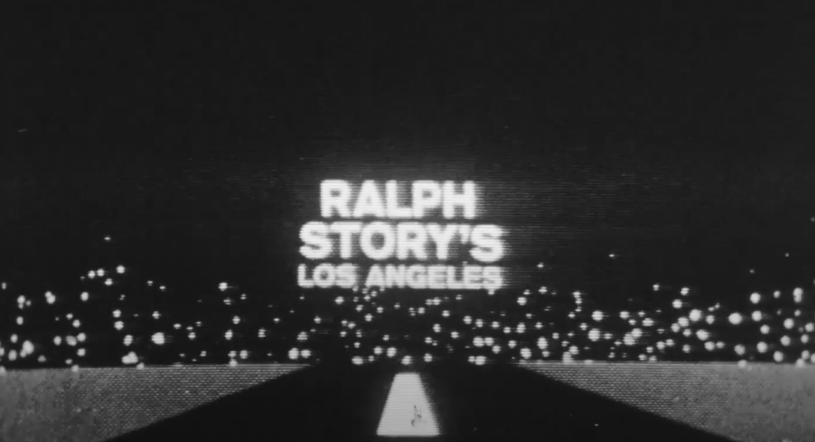

By Jessica Portner
